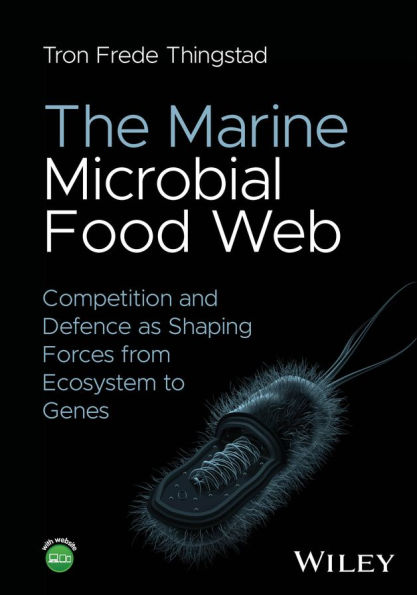In The Marine Microbial Food Web: Competition and Defence as Shaping Forces from Ecosystem to Genes, distinguished researcher Tron Frede Thingstad delivers an insightful and practical discussion of the microbial portion of the ocean’s food web. The author describes how specific factors, including evolution, biodiversity, organism life strategies, genome organization, biogeochemistry, food web structure, and population dynamics, can be understood as the consequences of the balance between competition and defence.
Using modular idealized mathematical models developed from classical Lotka-Volterra formulations, the book describes models that explain the balance between production and consumption of organic material in the photic zone and the potential for export to the ocean’s interior. It also explains how the models are relevant to contemporary climate change and a variety of other modern applications.
Readers will also find:
- A thorough explanation of why the pathogenicity of many “L-strategists” probably originated as coincidental evolution from originally evolved mechanisms for predator defence
- Comprehensive explorations of the role of the marine microbial food web in ocean biogeochemistry and production
- Practical discussions of simple mathematical models of competition, defence, trade-off, and fitness
- Fulsome treatments of a wide range of organization levels, including individual cells and larger communities of organisms
Perfect for researchers, students, and instructors of marine ecology, marine microbiology, and microbial oceanography, The Marine Microbial Food Web will also prove invaluable to limnologists, oceanographers, and students with an interest in applied mathematics.
In The Marine Microbial Food Web: Competition and Defence as Shaping Forces from Ecosystem to Genes, distinguished researcher Tron Frede Thingstad delivers an insightful and practical discussion of the microbial portion of the ocean’s food web. The author describes how specific factors, including evolution, biodiversity, organism life strategies, genome organization, biogeochemistry, food web structure, and population dynamics, can be understood as the consequences of the balance between competition and defence.
Using modular idealized mathematical models developed from classical Lotka-Volterra formulations, the book describes models that explain the balance between production and consumption of organic material in the photic zone and the potential for export to the ocean’s interior. It also explains how the models are relevant to contemporary climate change and a variety of other modern applications.
Readers will also find:
- A thorough explanation of why the pathogenicity of many “L-strategists” probably originated as coincidental evolution from originally evolved mechanisms for predator defence
- Comprehensive explorations of the role of the marine microbial food web in ocean biogeochemistry and production
- Practical discussions of simple mathematical models of competition, defence, trade-off, and fitness
- Fulsome treatments of a wide range of organization levels, including individual cells and larger communities of organisms
Perfect for researchers, students, and instructors of marine ecology, marine microbiology, and microbial oceanography, The Marine Microbial Food Web will also prove invaluable to limnologists, oceanographers, and students with an interest in applied mathematics.

The Marine Microbial Food Web: Competition and Defence as Shaping Forces from Ecosystem to Genes
240
The Marine Microbial Food Web: Competition and Defence as Shaping Forces from Ecosystem to Genes
240
